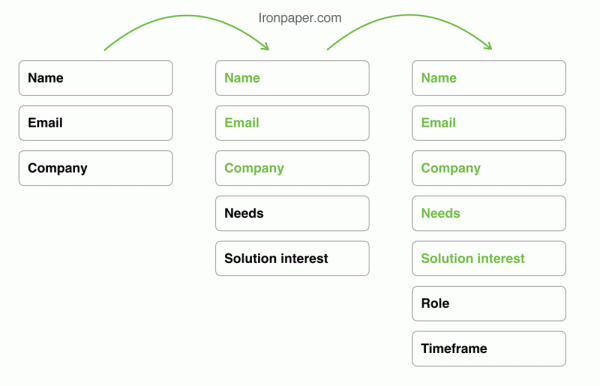
Some 42% of marketers told DemandGen they’d been practicing lead nurturing for more than two years. Nevertheless, there's a lot of room for improvement. Savvy marketers are always on the lookout for best practices. Here are some tips on how to improve lead nurturing results.

Lead nurturing helps the marketer cultivate stronger customer relationships and improve buyer readiness by targeting communications to relevant audience segments. Specific benefits include:
Related reading: The Importance of Lead Nurturing and Scoring
As marketers better understand the benefits, the sophistication of lead nurturing practices grows. Wondering how to improve lead nurturing results? Try these strategies.
89% of marketers use lead nurturing programs in demand generation strategy — DemandGen
Understanding the customer continues to be key. Gartner predicts excelling in personalization will help organizations outsell their competitors by 20%. Some 40% of marketers are already segmenting data by area of interest while segmenting by title, role. interest or industry remain the standard, according to DemandGen.
Segmenting can improve marketing effectiveness by helping personalize customer experience with more targeted content. Intelligent segmentation can also drive better user experience design and optimization. Further, personalization success may drive better product or service pricing.
Segments are behind-the-scenes groupings of customers derived from available data. In leveraging segmentation the statistical analysis should be based on:

Related reading: Value of Audience Segmentation Marketing
If segments offer a quantitative understanding of the target audience, personas are the qualitative view. Using analysis of primary and secondary sources to observe customer needs, behaviors, challenges, and values, marketers craft a fictional story about different customer types. Personas (or ideal buyer profiles) are vital to efficiency and accuracy with inbound marketing, lead generation, and account-based marketing.
 Personas for marketing
Personas for marketing
Personas are typically derived from:
Develop several distinct profiles, and don’t forget to evolve the personas as more information is gained. Make sure that buyer personas are simple, actionable, and serve as a useful framework for authoring content, building targeted ad campaigns, and creating the nurturing infrastructure. As an added bonus, track your leads acquired based on these same persona definitions, including conversion rates, marketing activities, and deal closed or influenced.
 HubSpot's contacts panel for tracking lead data
HubSpot's contacts panel for tracking lead data
Related reading: Six Steps to Better Buyer Personas
Progressive profiling uses the segments and personas to map key touchpoints and engage customers at the right moment. Marketing automation software offering dynamic or smart form fields helps the marketer progressively profile leads. With iterative forms, the marketer can designate which questions appear on a form, based on what is already known about that lead.

Progressive profiling identifies the paths personas travel, both pre- and post-purchase, then provides the relevant content along the way. Most importantly, profiling recognizes the buyer’s journey as a process and doesn’t aim to nurture leads immediately from prospect to closed sale. Profiling appreciates the nuanced differences among a lead who has just become aware of a brand and a known customer who could become a brand advocate.

28% of DemandGen respondents had an average sales cycle of three to six months.
Related reading: What is Progressive Profiling?
Buyer behavior is increasingly difficult to predict with customers typically researching anonymously, having higher expectations and demanding more control of the process. Yet with a better understanding of buyer stage and interests, the marketer can more effectively nurture leads with targeted content.
 Content offers can help you throughout the entire sales funnel, especially when targeting specific stakeholders in the sales process.
Content offers can help you throughout the entire sales funnel, especially when targeting specific stakeholders in the sales process.
White papers (83%), on-demand webinars (63%), and thought leadership (41%) content are the most successful gated content, per DemandGen’s study.
44% marketers cite white papers as working best within nurture programs — DemandGen
Related reading: B2B Marketing Builds Brand Authority with Quality Content
Lead nurturing involves building a relationship and sharing relevant content with warm leads who aren’t yet ready to make a purchasing decision. This ensures that when they are ready, your company wins their business. These tips can help improve lead nurturing results while developing more meaningful interactions with buyers that lead to higher close and response rates.
SOURCES:
How to Improve Lead Nurturing Results Sources
Kihn, M. and Sorofman, J. (2016). The Big Flip: How to Graduate from Selling What You Have on the Truck to Serving Your Customers. www.gartner.com/digitalmarketing
Krol, C. (2016). 2016 Lead Nurturing Benchmark Study. https://www.demandgenreport.com/resources/reports/2016-lead-nurturing-benchmark-study
by Jonathan Franchell, CEO of Ironpaper - For more tips and hacks: Need to remove a new line after h1 tags? Both web designers and SEO practitioners need to employ headline tags: H1, H2, H3 in several ways to improve web page structure and tag...

The Crowded Arena of the IT Marketplace Updated December 2024 The Information Technology (IT) landscape is experiencing rapid growth and intensifying competition. IT spending is projected to reach nearly 5.1 trillion U.S. dollars in 2024, a...

The marketing industry is transforming significantly due to generative AI and increasing market complexity. Gartner's prediction of a 25% decline in traditional search traffic suggests that the era of search engines is dying. AI tools, particularly...

Updated December, 2024 The field of digital marketing is evolving rapidly in response to new technology and changing buyer expectations. To help career-minded marketers, we’ve rounded up the top 10 skills needed to succeed in the field. These are...
